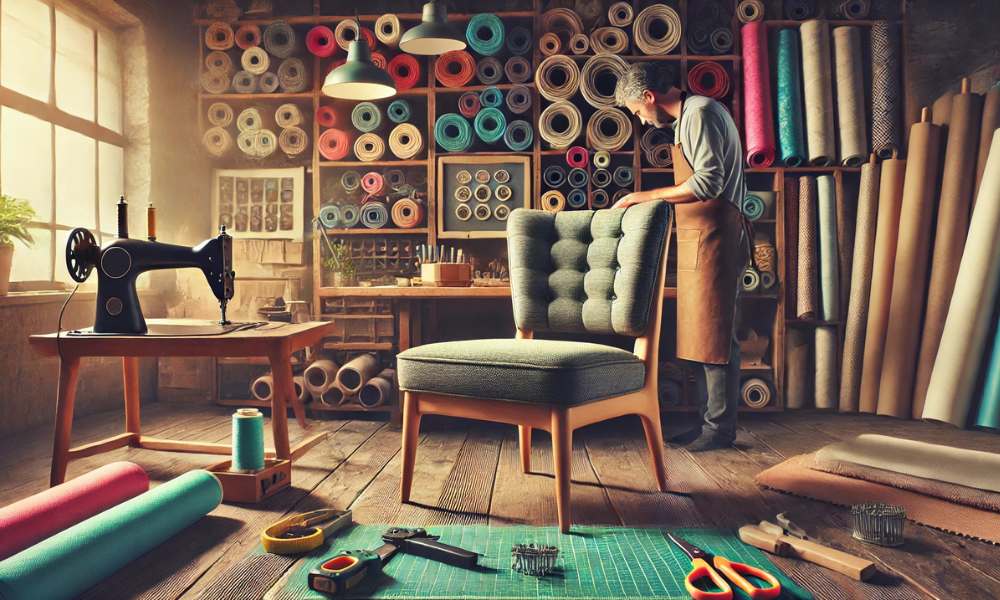Reupholstering a chair is an excellent way to revive furniture you love while adding a personal touch to your decor. Whether you’re holding onto a sentimental piece or upgrading a thrift store find, understanding the costs involved is key to making the right decision. So, how much does it cost to reupholster a chair From fabric choices to labor expenses, this guide breaks down everything you need to know. By the end, you’ll have a clear understanding of what influences the price and tips to make your project cost-effective, ensuring your revamped chair looks as good as new.
Understanding the Art of Reupholstery
Reupholstery is greater than changing material it’s a meticulous system of dismantling, repairing, and rebuilding a chair to repair its allure and functionality. From stripping down the vintage material to reinforcing the shape and selecting the appropriate cloth, each step requires skill and precision. It’s an investment in craftsmanship that transforms ordinary furniture into bespoke portions.
Choosing the Right Fabric
The fabric you select plays a pivotal role in the final aesthetic and durability of your chair. Upholstery fabrics come in a variety of textures, patterns, and materials, each offering a unique character. While luxurious velvets or leathers add elegance, sturdy cottons or blends provide practicality. Striking a balance between visual appeal and utility is key to achieving a satisfying result.
Factors That Affect Reupholstery Costs
Several variables determine the overall cost of reupholstering a chair. Here’s a breakdown of the most significant factors:
Chair Size and Complexity of Design
The dimensions and design intricacy of a chair heavily influence costs. A simple dining chair may require less material and labor, whereas an elaborate armchair with tufting or ornate carvings demands more effort and expertise.
Fabric Choice: Quality vs. Affordability
Premium fabrics can significantly increase costs. High-end materials such as silk or leather are expensive but offer unparalleled elegance and longevity. Conversely, budget-friendly options like polyester blends provide durability without straining your wallet.
Labor Costs: DIY vs. Professional Services
Hiring a professional upholsterer ensures quality workmanship but comes at a price. DIY reupholstery saves on labor costs, but it requires time, tools, and a certain level of skill. Assessing your capabilities is vital before embarking on a DIY project.
Structural Repairs: Hidden Costs to Consider
Many chairs require more than just new fabric. Structural issues, such as loose joints or damaged padding, can add unexpected expenses. Professional assessments help identify these hidden repairs upfront.
Breaking Down the Costs
Reupholstery costs vary based on the type of chair. Dining chairs cost $50–$200, while armchairs or recliners range from $300–$1,500. Antique or custom chairs often incur additional expenses. Understanding these cost brackets helps you plan effectively and choose services that match your needs.
Average Cost to Reupholster a Dining Chair
Dining chairs are among the simplest to reupholster, costing between $50 and $200 each. With minimal material requirements and straightforward designs, they are an accessible option for those looking to refresh their dining room on a budget.
Cost of Reupholstering an Armchair or Recliner
Armchairs and recliners are more complex, often costing $300 to $1,500. Their larger size and intricate features, such as reclining mechanisms or tufted details, require skilled labor, contributing to their higher reupholstery price.
Additional Costs for Antique or Custom Chairs
Antique and custom chairs demand specialized care, with costs starting at $1,000. Restoring delicate woodwork, intricate designs, or vintage fabrics adds to the expense. These projects require expert craftsmanship to preserve the chair’s historical or sentimental value.
Popular Fabric Options and Their Costs
Common fabric choices include cotton ($10–$50/yard), velvet ($50–$200/yard), and leather ($100–$300/yard). Polyester blends offer affordability, while jacquard or brocade adds a touch of luxury. Choosing the right fabric depends on your aesthetic goals and budget constraints.
Cost-Saving Tips for Chair Reupholstery
Reduce costs by sourcing discounted materials, repurposing old fabrics, or tackling simpler projects yourself. Timing reupholstery during sales or offseason periods can also yield significant savings. These strategies ensure a beautiful result without overspending.
Repurposing Fabric from Other Items
Old curtains, tablecloths, or unused upholstery can serve as cost-effective fabric options. Repurposing these materials not only reduces waste but also adds a unique, personal touch to your Much Does It Cost To Reupholster A Chair chair, blending creativity with sustainability.
How to Source Budget-Friendly Upholstery Materials
Local fabric stores, thrift shops, and online marketplaces often have affordable materials. Look for clearance sections or remnants, which are ideal for smaller projects. This approach helps keep expenses low while offering a variety of stylish options.
Timing Your Reupholstery Project for Seasonal Discounts
Upholstery services and fabric retailers often offer discounts during slower seasons. Scheduling your project post-holiday or during the off-season can lead to significant savings, making it a smart strategy for budget-conscious homeowners.
FAQs
How long does reupholstery take?
Ans: Depending on the complexity, it may take a few days to weeks.
Is DIY reupholstery worth it?
Ans: For simple projects, yes. Intricate designs, however, often require professional expertise.
How do I maintain reupholstered furniture?
Ans: Regular cleaning and prompt stain removal help preserve its look and longevity.
Conclusion
Reupholstering a chair is an investment in both aesthetics and sustainability. By understanding the factors influencing costs and exploring cost-saving strategies, you can rejuvenate your furniture while staying within budget. Whether opting for professional services or embarking on a DIY journey, reupholstery transforms ordinary chairs into bespoke pieces that elevate any space.

